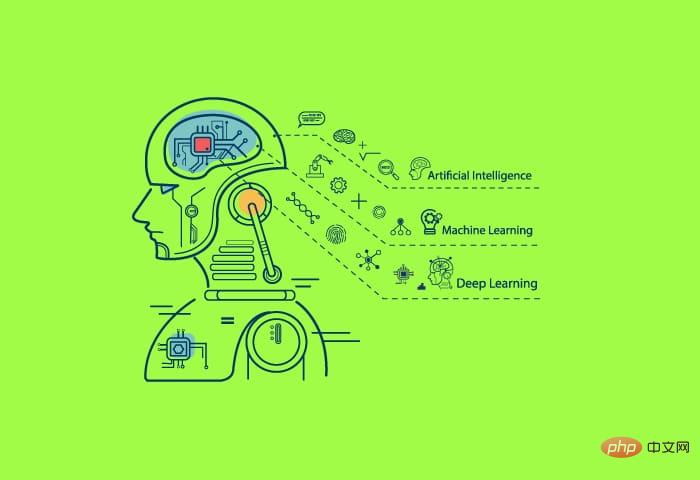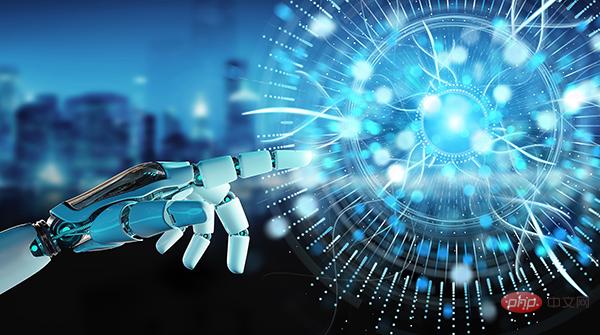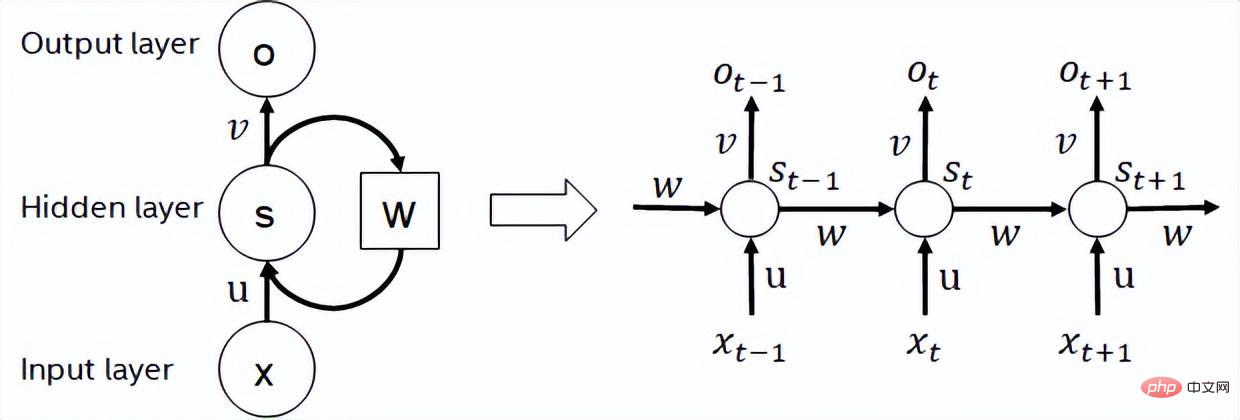 Technology peripherals
Technology peripherals AI
AI How does GNN model spatiotemporal information? A review of 'Spatial-temporal Graph Neural Network' at Queen Mary University of London, a concise explanation of the spatio-temporal graph neural network method
How does GNN model spatiotemporal information? A review of 'Spatial-temporal Graph Neural Network' at Queen Mary University of London, a concise explanation of the spatio-temporal graph neural network methodThese powerful algorithms have gained huge interest in the past few years. However, this performance is based on the assumption of static graph structure, which limits the performance of graph neural networks when data changes over time. Sequential graph neural network is an extension of graph neural network that considers time factors.
In recent years, various sequential graph neural network algorithms have been proposed and have achieved performance superior to other deep learning algorithms in multiple time-related applications. This review discusses interesting topics related to spatiotemporal graph neural networks, including algorithms, applications, and open challenges.

Paper address: https://www.php.cn/link/1915523773b16865a73a38acc952ccda
1. Introduction
Graph Neural Network (GNN) is a type of deep learning model specifically designed to process graph-structured data. These models exploit graph topology to learn meaningful representations of the nodes and edges of the graph. Graph neural networks are an extension of traditional convolutional neural networks and have proven effective in tasks such as graph classification, node classification, and link prediction. One of the key advantages of GNNs is that they maintain good performance even as the size of the underlying graph grows, because the number of learnable parameters is independent of the number of nodes in the graph. Graph neural networks (GNN) have been widely used in various fields such as recommendation systems, drug discovery and biology, and resource allocation in autonomous systems. However, these models are limited to static graph data, where the graph structure is fixed. In recent years, time-varying graph data has attracted increasing attention, appearing in various systems and carrying valuable temporal information. Applications of time-varying graph data include multivariate time series data, social networks, audio-visual systems, etc.
In order to meet this demand, a new GNN family has emerged: spatiotemporal GNN, which takes into account the spatial and temporal dimensions of the data by learning the temporal representation of the graph structure. This paper provides a comprehensive review of state-of-the-art spatiotemporal graph neural networks. This article begins with a brief overview of different types of spatiotemporal graph neural networks and their basic assumptions. The specific algorithms used in spatiotemporal GNNs are studied in more detail, while also providing a useful taxonomy for grouping these models. The paper also provides an overview of various applications of spatiotemporal GNNs, highlighting key areas where these models have been used to achieve state-of-the-art results. Finally, challenges facing the field and future research directions are discussed. In conclusion, this review aims to provide a comprehensive and in-depth study of spatiotemporal graph neural networks, highlighting the current state of the field, the key challenges that still need to be addressed, and the exciting future possibilities of these models.
2. Algorithm
From an algorithmic perspective, spatiotemporal graph neural networks can be divided into two categories: spectrum-based and space-based. Another classification category is methods that introduce time variation: another machine learning algorithm or defining time in a graph structure.
2.1 Hybrid spatiotemporal graph neural network
The hybrid spatiotemporal graph neural network consists of two main components: spatial component and temporal component. In hybrid spatiotemporal graph neural networks, graph neural network algorithms are used to model spatial dependencies in data.

2.2 Solo-Graph Neural Network
Another way to model time in a spatio-temporal graph neural network is to define the time frame in the GNN itself. Various methods have been proposed, including: defining time as edges, inputting time as signals into GNNs, modeling time as subgraphs, and sandwiching other machine learning architectures into GNNs (Figure 2).


3. Application
3.1 Multivariable time series forecast
Processed by graph neural network Inspired by the ability of relational dependence [10], spatiotemporal graph neural networks are widely used in multivariate time series prediction. Applications include traffic forecasting, Covid forecasting, photovoltaic power consumption, RSU communications and seismic applications.
3.2 Character interaction
In machine learning and computer vision, spatiotemporal domain learning is still a very challenging problem. The main challenge is how to model interactions between objects and higher-level concepts in large spatiotemporal contexts [18]. In such a difficult learning task, it is crucial to effectively model spatial relationships, local appearance, and complex interactions and changes over time. [18] introduced a spatiotemporal graph neural network model that loops in space and time, suitable for capturing the local appearance and complex high-level interactions of different entities and objects in changing world scenes [18].
3.3 Dynamic graph representation
Sequential graph representation learning has always been considered a very important aspect in graph machine learning [15,31]. Aiming at the limitation that existing methods rely on discrete snapshots of sequence diagrams and cannot capture powerful representations, [3] proposed a dynamic graph representation learning method based on spatiotemporal graph neural networks. Furthermore, [15] now use spatiotemporal GNN to dynamically represent brain maps. Multi-target tracking Multi-target tracking in videos relies heavily on modeling the spatio-temporal interactions between targets [16]. [16] proposed a spatiotemporal graph neural network algorithm to model the spatial and temporal interactions between objects.
3.4 Sign Language Interpretation
Sign language uses a visual-manual method to convey meaning and is the main communication tool for the deaf and hard of hearing groups. To bridge the communication gap between spoken language users and sign language users, machine learning technology is introduced. Traditionally, neural machine translation has been widely adopted, but more advanced methods are needed to capture the spatial properties of sign languages. [13] proposed a sign language translation system based on spatiotemporal graph neural network, which has a strong ability to capture the spatiotemporal structure of sign language and achieved the best performance compared with the traditional neural machine translation method [13] .
3.5 Technology Growth Ranking
Understanding the growth rate of technology is a core key to the business strategy of the technology department. Additionally, forecasting the growth rates of technologies and their relationships with each other can aid business decisions in product definition, marketing strategies, and R&D. [32] proposed a prediction method for social network technology growth ranking based on spatiotemporal graph neural network.
4. Conclusion
Graph neural networks have gained tremendous interest in the past few years. These powerful algorithms extend deep learning models to non-Euclidean spaces. However, graph neural networks are limited to static graph structure assumptions, which limits the performance of graph neural networks when data changes over time. Sequential graph neural network is an extension of graph neural network that considers time factors. This article provides a comprehensive overview of spatiotemporal graph neural networks. This paper proposes a taxonomy that divides spatiotemporal graph neural networks into two categories based on time-varying methods. The wide range of applications of spatiotemporal graph neural networks are also discussed. Finally, future research directions are proposed based on the open challenges currently faced by spatiotemporal graph neural networks.
Reference materials:https://www.php.cn/link/1915523773b16865a73a38acc952ccda
The above is the detailed content of How does GNN model spatiotemporal information? A review of 'Spatial-temporal Graph Neural Network' at Queen Mary University of London, a concise explanation of the spatio-temporal graph neural network method. For more information, please follow other related articles on the PHP Chinese website!
 人工智能(AI)、机器学习(ML)和深度学习(DL):有什么区别?Apr 12, 2023 pm 01:25 PM
人工智能(AI)、机器学习(ML)和深度学习(DL):有什么区别?Apr 12, 2023 pm 01:25 PM人工智能Artificial Intelligence(AI)、机器学习Machine Learning(ML)和深度学习Deep Learning(DL)通常可以互换使用。但是,它们并不完全相同。人工智能是最广泛的概念,它赋予机器模仿人类行为的能力。机器学习是将人工智能应用到系统或机器中,帮助其自我学习和不断改进。最后,深度学习使用复杂的算法和深度神经网络来重复训练特定的模型或模式。让我们看看每个术语的演变和历程,以更好地理解人工智能、机器学习和深度学习实际指的是什么。人工智能自过去 70 多
 深度学习GPU选购指南:哪款显卡配得上我的炼丹炉?Apr 12, 2023 pm 04:31 PM
深度学习GPU选购指南:哪款显卡配得上我的炼丹炉?Apr 12, 2023 pm 04:31 PM众所周知,在处理深度学习和神经网络任务时,最好使用GPU而不是CPU来处理,因为在神经网络方面,即使是一个比较低端的GPU,性能也会胜过CPU。深度学习是一个对计算有着大量需求的领域,从一定程度上来说,GPU的选择将从根本上决定深度学习的体验。但问题来了,如何选购合适的GPU也是件头疼烧脑的事。怎么避免踩雷,如何做出性价比高的选择?曾经拿到过斯坦福、UCL、CMU、NYU、UW 博士 offer、目前在华盛顿大学读博的知名评测博主Tim Dettmers就针对深度学习领域需要怎样的GPU,结合自
 字节跳动模型大规模部署实战Apr 12, 2023 pm 08:31 PM
字节跳动模型大规模部署实战Apr 12, 2023 pm 08:31 PM一. 背景介绍在字节跳动,基于深度学习的应用遍地开花,工程师关注模型效果的同时也需要关注线上服务一致性和性能,早期这通常需要算法专家和工程专家分工合作并紧密配合来完成,这种模式存在比较高的 diff 排查验证等成本。随着 PyTorch/TensorFlow 框架的流行,深度学习模型训练和在线推理完成了统一,开发者仅需要关注具体算法逻辑,调用框架的 Python API 完成训练验证过程即可,之后模型可以很方便的序列化导出,并由统一的高性能 C++ 引擎完成推理工作。提升了开发者训练到部署的体验
 基于深度学习的Deepfake检测综述Apr 12, 2023 pm 06:04 PM
基于深度学习的Deepfake检测综述Apr 12, 2023 pm 06:04 PM深度学习 (DL) 已成为计算机科学中最具影响力的领域之一,直接影响着当今人类生活和社会。与历史上所有其他技术创新一样,深度学习也被用于一些违法的行为。Deepfakes 就是这样一种深度学习应用,在过去的几年里已经进行了数百项研究,发明和优化各种使用 AI 的 Deepfake 检测,本文主要就是讨论如何对 Deepfake 进行检测。为了应对Deepfake,已经开发出了深度学习方法以及机器学习(非深度学习)方法来检测 。深度学习模型需要考虑大量参数,因此需要大量数据来训练此类模型。这正是
 聊聊实时通信中的AI降噪技术Apr 12, 2023 pm 01:07 PM
聊聊实时通信中的AI降噪技术Apr 12, 2023 pm 01:07 PMPart 01 概述 在实时音视频通信场景,麦克风采集用户语音的同时会采集大量环境噪声,传统降噪算法仅对平稳噪声(如电扇风声、白噪声、电路底噪等)有一定效果,对非平稳的瞬态噪声(如餐厅嘈杂噪声、地铁环境噪声、家庭厨房噪声等)降噪效果较差,严重影响用户的通话体验。针对泛家庭、办公等复杂场景中的上百种非平稳噪声问题,融合通信系统部生态赋能团队自主研发基于GRU模型的AI音频降噪技术,并通过算法和工程优化,将降噪模型尺寸从2.4MB压缩至82KB,运行内存降低约65%;计算复杂度从约186Mflop
 地址标准化服务AI深度学习模型推理优化实践Apr 11, 2023 pm 07:28 PM
地址标准化服务AI深度学习模型推理优化实践Apr 11, 2023 pm 07:28 PM导读深度学习已在面向自然语言处理等领域的实际业务场景中广泛落地,对它的推理性能优化成为了部署环节中重要的一环。推理性能的提升:一方面,可以充分发挥部署硬件的能力,降低用户响应时间,同时节省成本;另一方面,可以在保持响应时间不变的前提下,使用结构更为复杂的深度学习模型,进而提升业务精度指标。本文针对地址标准化服务中的深度学习模型开展了推理性能优化工作。通过高性能算子、量化、编译优化等优化手段,在精度指标不降低的前提下,AI模型的模型端到端推理速度最高可获得了4.11倍的提升。1. 模型推理性能优化
 深度学习撞墙?LeCun与Marcus到底谁捅了马蜂窝Apr 09, 2023 am 09:41 AM
深度学习撞墙?LeCun与Marcus到底谁捅了马蜂窝Apr 09, 2023 am 09:41 AM今天的主角,是一对AI界相爱相杀的老冤家:Yann LeCun和Gary Marcus在正式讲述这一次的「新仇」之前,我们先来回顾一下,两位大神的「旧恨」。LeCun与Marcus之争Facebook首席人工智能科学家和纽约大学教授,2018年图灵奖(Turing Award)得主杨立昆(Yann LeCun)在NOEMA杂志发表文章,回应此前Gary Marcus对AI与深度学习的评论。此前,Marcus在杂志Nautilus中发文,称深度学习已经「无法前进」Marcus此人,属于是看热闹的不
 英伟达首席科学家:深度学习硬件的过去、现在和未来Apr 12, 2023 pm 03:07 PM
英伟达首席科学家:深度学习硬件的过去、现在和未来Apr 12, 2023 pm 03:07 PM过去十年是深度学习的“黄金十年”,它彻底改变了人类的工作和娱乐方式,并且广泛应用到医疗、教育、产品设计等各行各业,而这一切离不开计算硬件的进步,特别是GPU的革新。 深度学习技术的成功实现取决于三大要素:第一是算法。20世纪80年代甚至更早就提出了大多数深度学习算法如深度神经网络、卷积神经网络、反向传播算法和随机梯度下降等。 第二是数据集。训练神经网络的数据集必须足够大,才能使神经网络的性能优于其他技术。直至21世纪初,诸如Pascal和ImageNet等大数据集才得以现世。 第三是硬件。只有


Hot AI Tools

Undresser.AI Undress
AI-powered app for creating realistic nude photos

AI Clothes Remover
Online AI tool for removing clothes from photos.

Undress AI Tool
Undress images for free

Clothoff.io
AI clothes remover

AI Hentai Generator
Generate AI Hentai for free.

Hot Article

Hot Tools

MinGW - Minimalist GNU for Windows
This project is in the process of being migrated to osdn.net/projects/mingw, you can continue to follow us there. MinGW: A native Windows port of the GNU Compiler Collection (GCC), freely distributable import libraries and header files for building native Windows applications; includes extensions to the MSVC runtime to support C99 functionality. All MinGW software can run on 64-bit Windows platforms.

DVWA
Damn Vulnerable Web App (DVWA) is a PHP/MySQL web application that is very vulnerable. Its main goals are to be an aid for security professionals to test their skills and tools in a legal environment, to help web developers better understand the process of securing web applications, and to help teachers/students teach/learn in a classroom environment Web application security. The goal of DVWA is to practice some of the most common web vulnerabilities through a simple and straightforward interface, with varying degrees of difficulty. Please note that this software

Notepad++7.3.1
Easy-to-use and free code editor

SublimeText3 Mac version
God-level code editing software (SublimeText3)

Atom editor mac version download
The most popular open source editor






